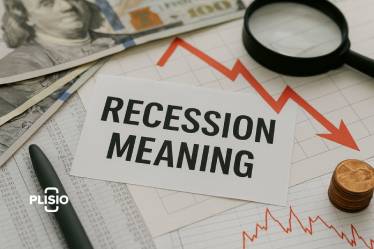Understanding and Managing Slippage in Crypto Trading

In the world of crypto trading, slippage refers to the difference between the expected price of a trade and the actual price at which the trade is executed. This price deviation is known as slippage and is a common aspect of crypto trading, especially in fast-moving or illiquid markets.
Slippage in cryptocurrency trading can occur within seconds and can significantly influence your trading outcomes, either positively or negatively. Understanding slippage in crypto is essential for anyone looking to buy or sell a crypto asset effectively.
According to FXCM’s 2024 execution report, 25.64% of all crypto trades experienced positive slippage, while 12.18% were affected by negative slippage — indicating that favorable outcomes are possible, but the risk of slippage remains.
What Causes Slippage in Crypto?
Several factors that affect slippage include:
- Low Trade Volume / Liquidity:
Slippage is more likely when there aren’t enough buy or sell orders in the order book. This is especially common with smaller altcoins where liquidity is thin. - High Market Volatility:
During periods of intense volatility, prices move rapidly. This increases the likelihood of slippage, especially if you're placing market orders. - Large Order Sizes:
Submitting large trades may consume multiple levels of liquidity in the order book, causing price shifts during order execution. - Network Congestion:
Blockchain delays during times of high usage may cause your trade to execute later, at a different price. - Liquidity Fragmentation:
As highlighted by Kaiko, fragmented liquidity across exchanges can further increase the impact of slippage.
Clara Medalie, Research Director at Kaiko, explains: "Liquidity fragmentation continues to pose challenges for crypto traders. Even with growing institutional participation, price discovery remains inefficient across smaller venues."
Types of Slippage
- Negative Slippage: You pay more or receive less than expected — this is the type traders seek to avoid.
- Positive Slippage: You receive a better price than expected — a potential benefit, though less frequent.
How to Calculate Slippage
Calculating slippage is crucial to evaluating trade performance:
- Slippage = Executed Price - Expected Price
- Slippage Percentage = (Executed Price - Expected Price) / Expected Price × 100
Example: If you intended to buy a token at $1,000 but it executed at $1,050, the slippage is $50 or 5%.
Platforms often offer slippage calculators to estimate your potential slippage before committing to a trade.
How to Manage Slippage in Crypto
Managing slippage requires strategy. Here are ways to reduce the risk of slippage:
- Set a slippage tolerance: Most DeFi platforms allow you to set your slippage tolerance. This determines the maximum slippage you're willing to accept before the trade cancels.
- Use limit orders: Placing limit orders helps you control execution prices. It's one of the most effective ways to avoid slippage in crypto trading.
- Avoid low-liquidity tokens: Higher trade volume generally means less slippage.
- Avoid peak congestion periods: Trading during lower network activity can help minimize delays.
- Use trading bots: Bots execute faster and reduce excessive slippage caused by hesitation.
- Analyze market trends: Keeping an eye on news and events helps anticipate spikes in volatility.
Marcus Thielen of 10x Research emphasizes: "High-frequency traders reduce slippage using optimized execution strategies — something retail investors often overlook."
Laura Shin adds: "Even small delays in fast-moving DeFi markets can amplify slippage. Automation and pre-set rules can make a major difference."
Slippage Across Exchanges and Platforms
The slippage rate varies across platforms:
- Centralized Exchanges (CEXs): Typically offer deeper liquidity and let you place limit orders, helping to minimize slippage in crypto trading.
- Decentralized Exchanges (DEXs): More vulnerable to crypto slippage due to reliance on liquidity pools. Most DEXs let you adjust slippage tolerance settings manually.
- Blockchain Infrastructure: The speed and fee structure of the blockchain can directly affect slippage.
In early 2025, Kraken climbed from 7th to 3rd in Kaiko’s liquidity rankings, signaling improvements in infrastructure that could help reduce the impact of slippage for traders.
Final Thoughts: Slippage Is Unavoidable — But Manageable
Slippage is a common and unavoidable part of trading crypto, but it's manageable with the right approach. By understanding and managing slippage, traders can protect against negative slippage and improve long-term performance.
Whether you're just starting out or actively trading, it’s essential to know how slippage may impact your execution. Setting your slippage tolerance, choosing the right platforms, and using the right trading strategies can help you minimize slippage in cryptocurrency trading.
Slippage in crypto refers to the difference between the expected and executed price — and understanding that difference is key to trading success.



